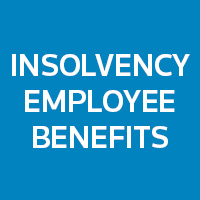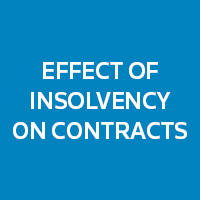Easy Money: Is This The End For Cash-Only Business?
The prediction of Australia becoming a cashless society by 2020 looks closer to becoming a reality with two developments: the government’s crackdown on cash-only businesses and the imminent launch of instant bank transfers. Let’s take a look at what these mean for you.
Ahead of the Black Economy Taskforce delivering its final recommendations, the Government continues to scrutinise businesses who deal largely in cash-only transactions.
The crackdown on cash is part of the Government’s campaign to create a fairer playing field for businesses in Australia – large and small – to protect workers by ensuring that employers pay superannuation and other benefits, and to recoup $5 billion lost in unpaid tax due to illegal business practices.
You can expect a visit from the ATO if your business meets any of the following criteria:
operate and advertise as a “cash only” business;
ATO data matching suggests you don’t take electronic payments;
are part of an industry where cash payments are common;
indicate unrealistic income relative to the assets and lifestyle of the business and owner;
fail to register for GST or failing to lodge activity statements or tax returns;
under-report transactions and income according to third-party data;
fail to meet super or employer obligations;
operate outside the normal small business benchmarks for your industry; and
you are reported to the ATO by the community for potential tax evasion.
Contact us if you would like to know more and to discuss how your business can transition out of a cash-only model.
Industries under the spotlight
The ATO has identified the building and construction, hair and beauty and restaurant industries as high risk, meaning they see that is easier for these businesses to hide cash-only transactions.
Examples
Here are some examples provided by the ATO based on their previous round of visits to businesses:
Failing to lodge and not reporting cash income
A licensed carpenter failed to lodge tax returns for a number of years. The ATO demanded lodgment and when the tax returns were lodged, it was clear that income from cash jobs was not included. An audit for the 2006 to 2013 financial years revealed that the taxpayer had over-claimed GST input tax credits in addition to not declaring cash income. The ATO said the taxpayer’s record keeping was very poor and they couldn’t explain how some materials and vehicles were funded. The audit resulted in the taxpayer owing additional tax and penalties of over $190,000.
Business owner’s lifestyle did not match their reported income
A nail salon business with a number of outlets was selected when data matching indicated anomalies. The ATO’s initial investigation confirmed that the owner kept incomplete records and declared income that did not support their lifestyle and assets. The ATO said it uncovered more than $2 million of undeclared income. After imposing penalties for reckless behaviour of over $241,000, the total amount of GST, income tax and penalties payable by the owner was more than $728,000.
Poor tracking of cash payments
During an ATO visit to a restaurant, the ATO said it became apparent that the owner needed to improve their record keeping practices as cash was kept in a cardboard shoe box. The ATO’s profiling work showed five merchant IDs, which the taxpayer said belonged to five different restaurants operating under the one entity. All had the same poor record keeping processes in place. The ATO’s analysis identified several bank accounts, and third-party information identified deposits in excess of $300,000 for 2014 and 2015. It identified $1.3 million of understated income for 2014 and $1.5 million for 2015. The ATO calculated cash not deposited by developing a “cash deposit timeline” for each restaurant. It turned out that no cash had been reported to the ATO, and only EFTPOS income had been included in tax returns and activity statements.
Benefits of a non-cash business model
We understand that changing a business model requires planning, but there are many benefits to changing to a non-cash model that can help your business to grow, such as:
-tax incentives you might have missed out on, by not accurately declaring your full income;
-happier customers – people expect to be able to pay by card;
-electronic payment and record keeping facilities give greater visibility over the health of your business;
-avoiding law suits and penalties for non-payment of employee entitlements, or allegations of underpayment.
You will undoubtedly be able to access more customers if you consider putting your business online.
How can I transform my business?
The best place to start the transition is with your record keeping methods. This means recording every sale and purchase accurately in your accounting software. By providing receipts when you make a sale and requesting an invoice every time you make a purchase, you will have a clear audit trail from which to declare all income and expenses. And if you need assistance – we are here to help you plan and provide advice on what you’ll need to do to ensure the best outcomes for your business.
One of the most attractive features of cash is its immediacy in terms of making transactions. But there are compelling changes ahead in the non-cash world.
Cashless business model incentivesThanks to a billion-dollar infrastructure upgrade of Australia’s payments systems, from January 2018 customers of the “Big Four” banks and 50 smaller institutions will be able to benefit from the arrival of real-time funds transfers between accounts. This means that even when transfers occur between account holders from different institutions, or on weekends, public holidays, or anytime of the day or night, the funds should appear in real time. As a result suppliers and vendors can be paid swiftly and your own customers will be able to extend the same courtesy, meaning that delays to payment will be a thing of the past.
Plan your transition
Whatever your circumstances, we can help you plan, provide advice and assist your business to transition to a non-cash model.












